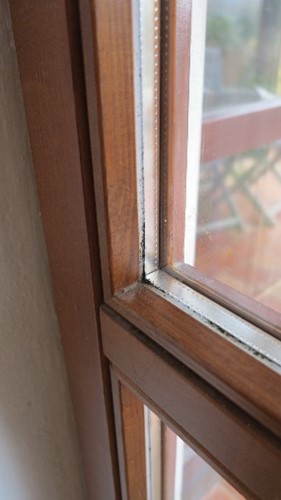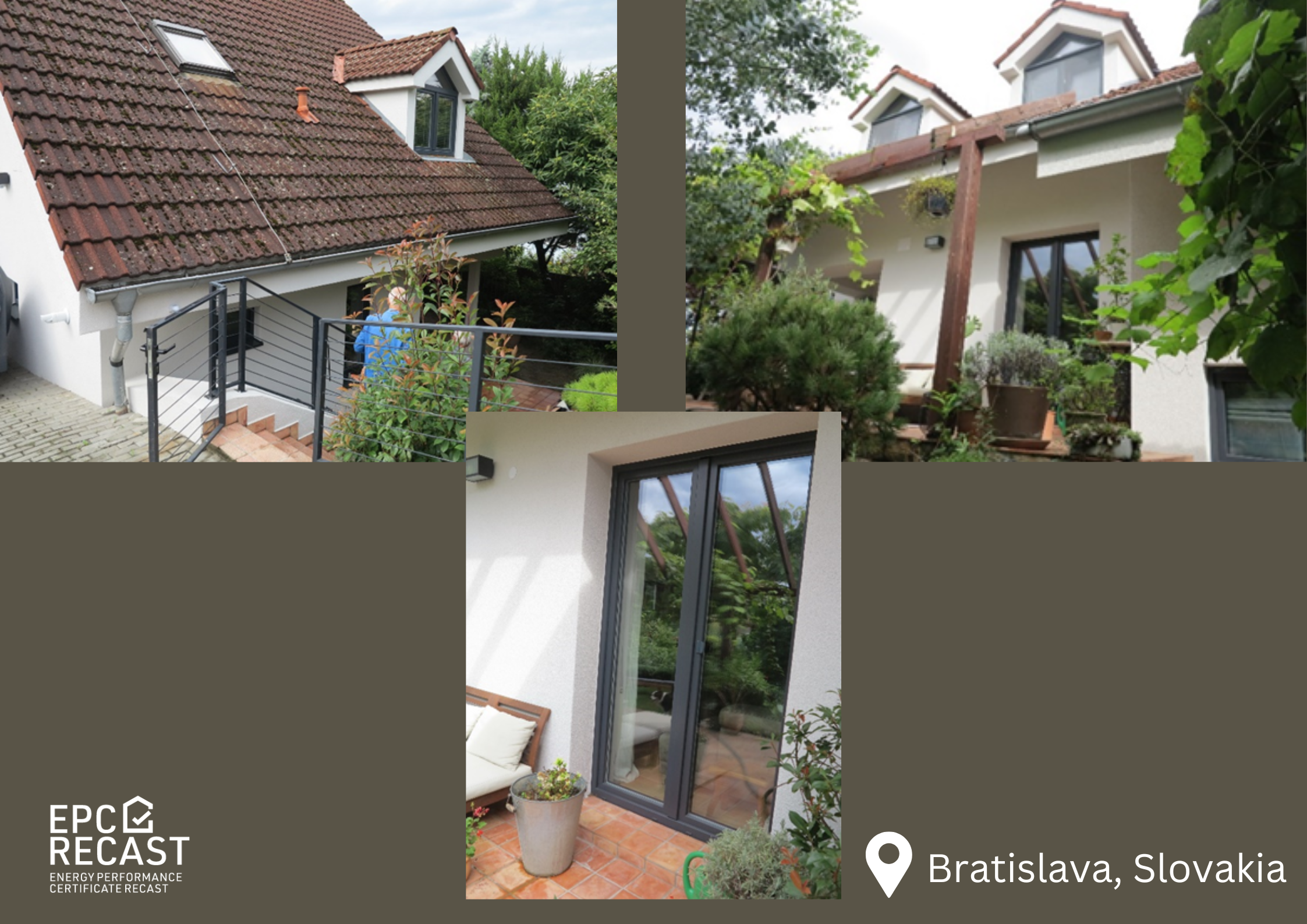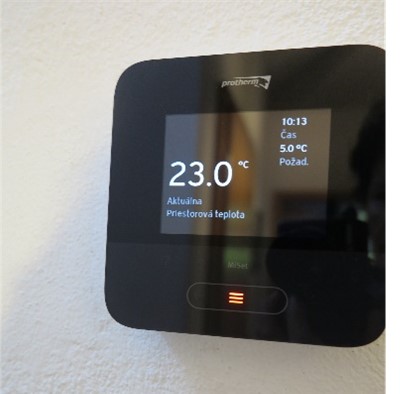The Slovak pilot building success story!
This family house in Bratislava is one of the five pilot buildings in Slovakia that participate in the EPC RECAST project with our partner ENBEE s.r.o.
After contacting the owner in 2021 regarding the potential participation in the EPC RECAST project as a pilot building, identifying the building defects and improvement potential, and calculating potential energy savings, this family house was successfully renovated in 2023.


Figure 1: On-site inspection before renovation
Insulation of walls with 100 mm thick thermal insulation, replacement of old windows with high-quality triple-glazed windows, a new condensing boiler and a control system resulted in a 50% saving in primary energy and entitled the owner to receive a grant from the Housing renovation scheme from EU’s Recovery and Resilience plan for Slovakia.


The EPC RECAST certificate has been delivered to the owner which provides several useful information missing in the national EPC and is in line with EU Taxonomy and revised EPBD.


Figure 3: EPC Recast energy performance certificate
The reliable assessment of energy performance is focus of the EPC RECAST project.
Two approaches for closing the gap between calculated and measured energy performance are proposed in the EPC RECAST project.
Operational rating was applied to this pilot building based on normalisation of measured energy to standard conditions that allows direct comparison with calculated energy reported in energy certificate.
The daily gas consumption from October 2023 to February 2024 allowed verification of real energy performance after renovation using the tool for operational rating developed by ENBEE.
The normalization taking into account not only the external temperature, but also the internal temperature and solar radiation shows a very good correlation with the calculated energy. Several inputs to the calculation were corrected after the first comparisons with the measured energy, which helped to improve the quality of the energy assessment and certificate.
The main gap between the measured and calculated energy that still remains after the fine-tuning calculation is due to the air exchange rate, which is usually lower after changing the windows than assumed in the calculation. The calculation with the real air exchange rate n=0.36 1/h shows a 1% difference between the calculated and measured energy, while with the assumed minimum air exchange n=0.5 1/h the difference is 10% for this building with a good internal temperature control system.
The results of the measured energy assessment are shown in the energy certificate together with the calculated energy signature, which will allow the owner to monitor his actual energy consumption in the future.


Figure 4: Measured energy consumption in pilot building SK02
A comparison of the calculated energy demand with the actually measured one is provided for all Slovak pilot buildings. The comparison shows very good results for residential buildings due to continuous use, but the quality of the measured data is an important prerequisite and the evaluation is rejected if a certain quality of the measured data is not achieved. For some pilot buildings, only annual energy bills are available, but the use of the operational rating tool is still possible and the result is acceptable.

Figure 5: Report from measured energy evaluation
Author: Jana Bendžalová, ENBEE s.r.o.

